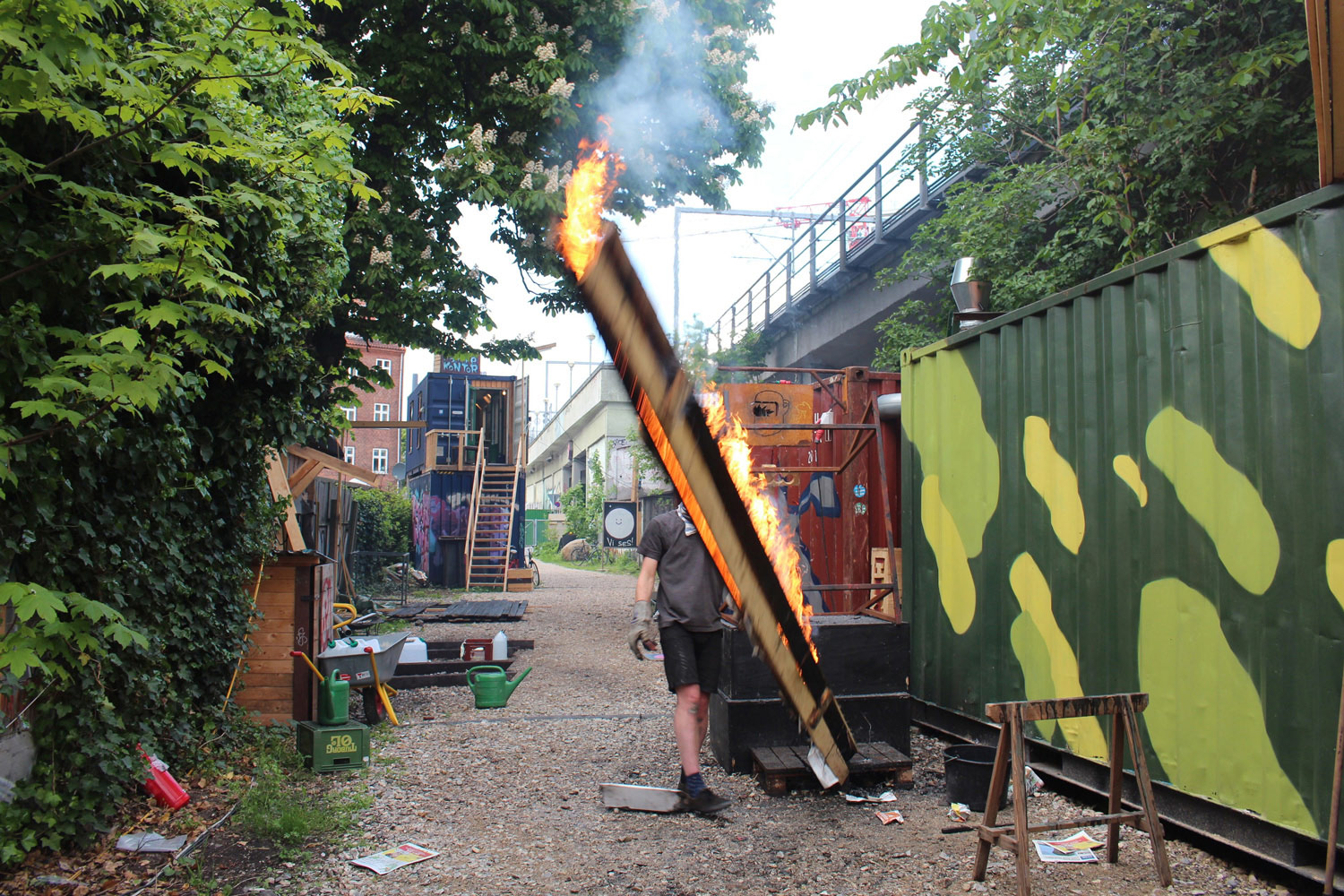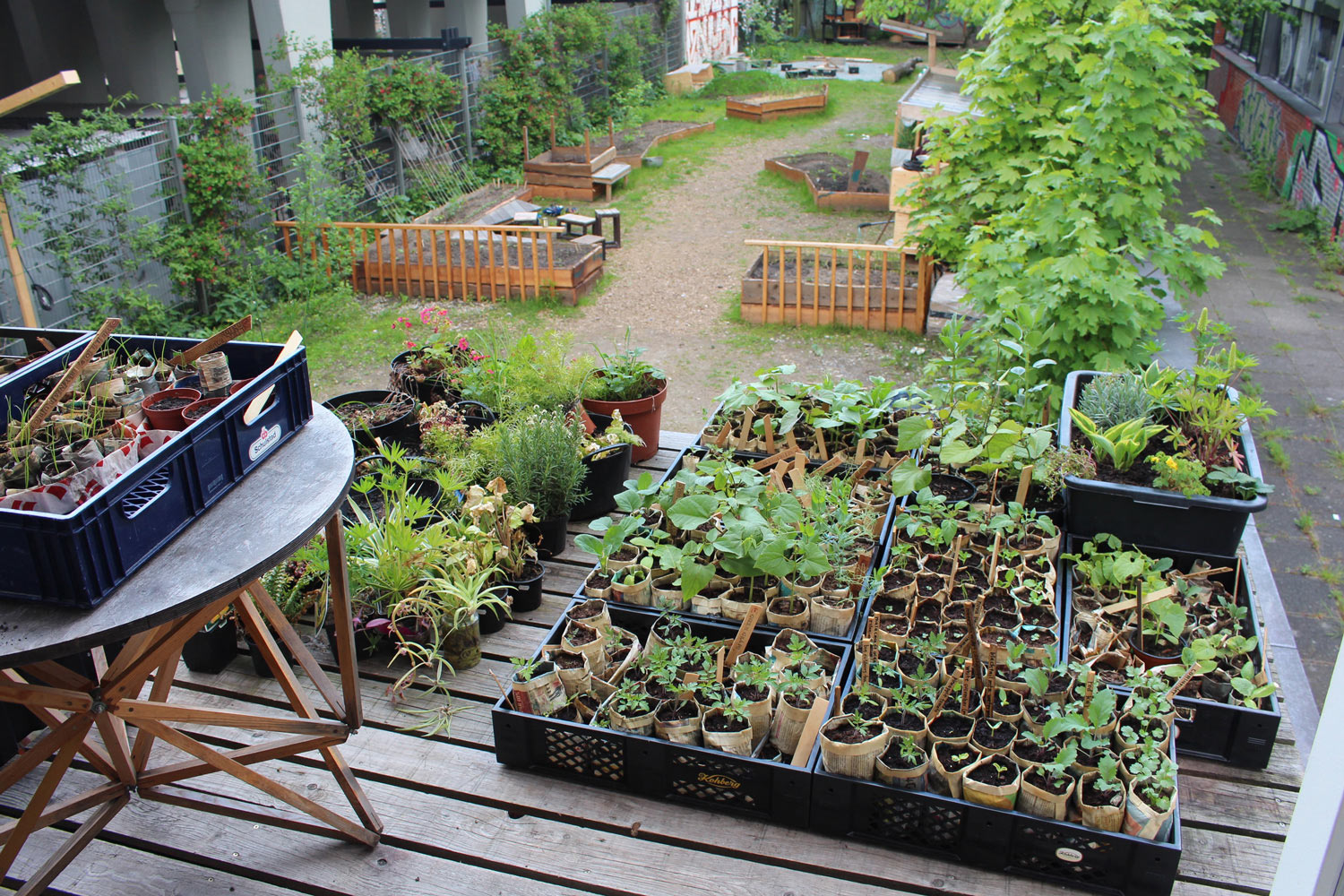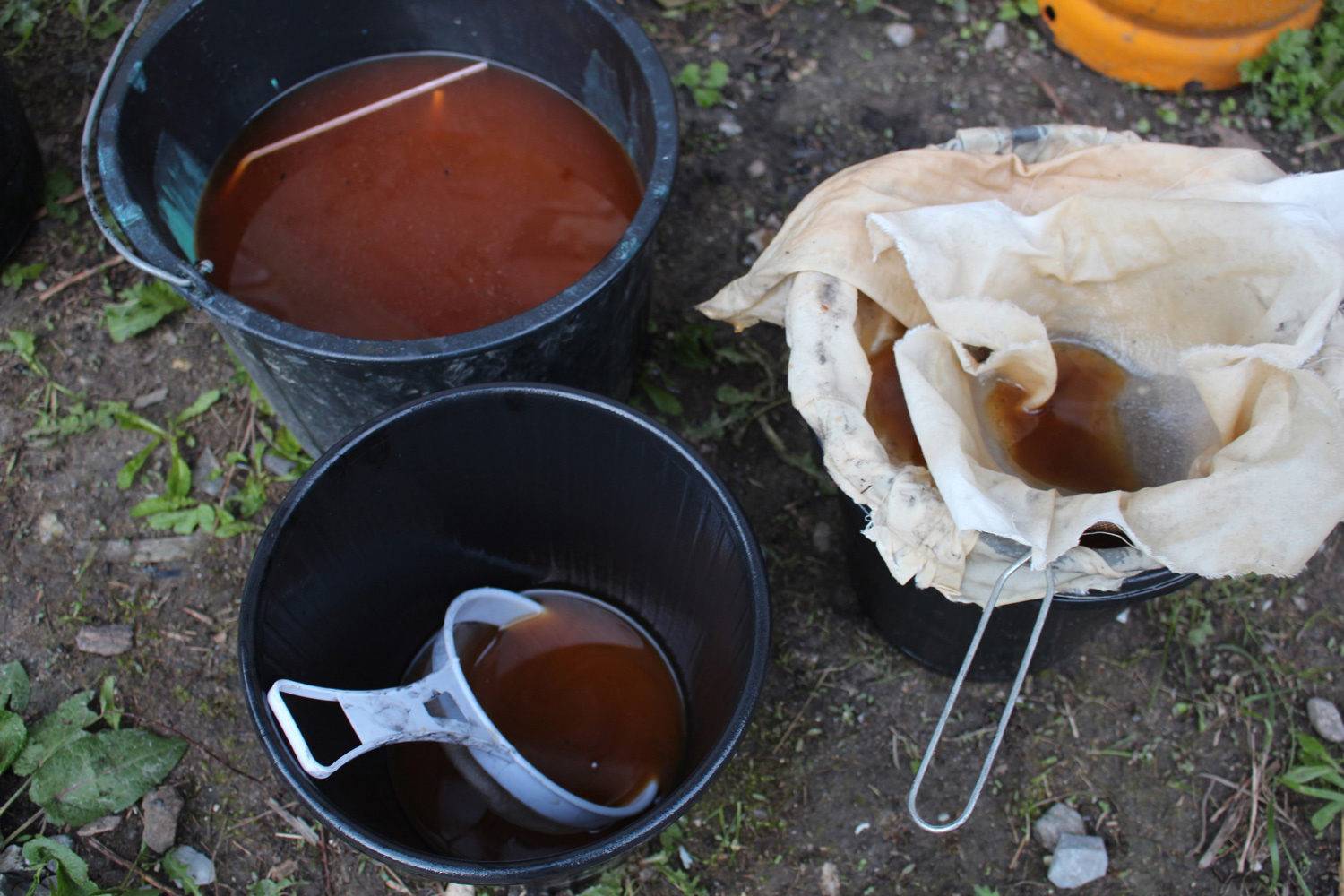SHOU SUGI BAN GARDEN
ASTRID NOACKS ATELIER. COPENHAGEN, DENMARK, 2015
These garden beds were built for an outdoor courtyard at Astrid Noacks Atelier, an historic art studio commemorating the female Danish sculptor who worked there during the 1930s. We were invited to create a community garden for those who worked in the space and for locals to engage and interact with.
As part of an ongoing discussion regarding creative sustainability, we were interested in alternative ways of preserving wood for outdoor projects, without using chemical treatments. Our research led us to a traditional Japanese wood charring technique called Shou Sugi Ban, which translates to burnt cedar board.
In this process, three long planks of wood are bound with wire into a chimney shape. A fire is lit at the bottom and when it catches, is chased upwards by opening the edge of the chimney with a tool (know as chasing the fire), fueling the fire with oxygen. Eventually the fire scorches the wood all the way along and a flame rises out from the top of the chimney several feet into the air. The blackened wood is resistant to decay and pests – giving it a longevity of up to 80 years.
Traditionally, Shou Sugi Ban wood is sealed with linseed oil. However, we decided to experiment using reclaimed vegetable oil from a local falafel shop, which we filtered on site. Vegetable oil is a softer oil than linseed, but the intention was to try to find an alternative way of sealing the untreated pine wood we used. The materials traditionally used (cedar wood and linseed oil) are reasonably expensive, but part of our project brief was to make the process available to all.
Heirloom seeds were sown and nurtured in spring. At the start of summer, the garden beds were fabricated at Container By, in Copenhagen. They were then transported to Astrid Noacks Atelier and filled with soil from the local municipal refuse centre, planted out with the seedlings and tended throughout the summer.
In autumn, produce was harvested and cooked during Copenhagen Art Week at an event called Philosophy and Brunch, which satiated around 70 people. The event sought to create a space for discussion and reflection upon what was being eaten, and the process in which it came to be on the plate. Alongside this, a handmade riso-print publication was created, containing selected texts, several recipe cards and a small assortment of seeds.
Metal frames fabricated by Peter Lausten
Wood, metal, soil, plants, string, wheels
2 m diameter hexagons x 60 cm
















